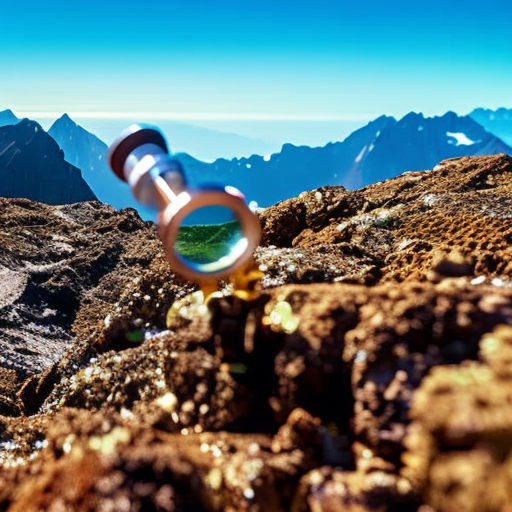Summary:
Mineral exploration is the process of searching for valuable minerals in the Earth’s crust. It involves various techniques and methods to identify potential mineral deposits. Exploration is crucial for the mining industry as it helps determine the economic viability of a mineral deposit before extraction begins. This summary provides an overview of the mineral exploration process, including the methods used, the role of technology, and the environmental considerations involved.
Introduction:
Mineral exploration is a fundamental step in the mining industry. It involves the search for mineral deposits that can be economically extracted and processed. The exploration process aims to identify areas with high mineral potential and determine the quantity and quality of the minerals present.
Methods of Mineral Exploration:
There are several methods used in mineral exploration, each with its own advantages and limitations. These methods can be broadly categorized into two main types: surface exploration and subsurface exploration.
1. Surface Exploration:
Surface exploration involves collecting data from the Earth’s surface to identify potential mineral deposits. This method includes various techniques such as geological mapping, geochemical sampling, and geophysical surveys. Geological mapping involves studying the rocks and minerals exposed at the surface to understand the geological history of an area. Geochemical sampling involves collecting and analyzing soil, rock, and water samples to detect anomalies in mineral content. Geophysical surveys use instruments to measure physical properties of the Earth’s subsurface, such as magnetic and electrical fields, to identify potential mineral deposits.
2. Subsurface Exploration:
Subsurface exploration involves collecting data from beneath the Earth’s surface to determine the presence of mineral deposits. This method includes techniques such as drilling, remote sensing, and seismic surveys. Drilling involves extracting core samples from the ground to analyze the rock composition and structure. Remote sensing uses satellite imagery and aerial photographs to identify geological features that may indicate the presence of minerals. Seismic surveys use sound waves to create images of subsurface rock layers and identify potential mineral deposits.
Role of Technology in Mineral Exploration:
Technology plays a crucial role in modern mineral exploration, enabling more efficient and accurate data collection and analysis. Advanced instruments and techniques have revolutionized the industry, allowing exploration teams to cover larger areas and detect smaller mineral deposits. For example, satellite imagery and aerial surveys provide high-resolution data for geological mapping and remote sensing. Geographic Information Systems (GIS) help integrate and analyze various types of spatial data, facilitating decision-making in exploration projects. Additionally, advanced drilling techniques and equipment have improved the efficiency and accuracy of subsurface exploration.
Environmental Considerations:
Mineral exploration must also consider environmental factors to ensure sustainable practices. Exploration activities can have impacts on ecosystems, water resources, and local communities. To mitigate these impacts, exploration companies follow environmental regulations and implement best practices. They conduct environmental impact assessments, monitor air and water quality, and implement measures to minimize disturbances to wildlife and habitats. Additionally, companies engage with local communities and stakeholders to address concerns and ensure responsible exploration practices.
Conclusion:
Mineral exploration is a critical process in the mining industry, enabling the identification and evaluation of potential mineral deposits. Surface and subsurface exploration methods, supported by advanced technology, play a crucial role in this process. However, it is essential to conduct exploration activities responsibly, considering environmental factors and engaging with local communities. By doing so, the mining industry can ensure sustainable practices and minimize the impacts of mineral extraction.












